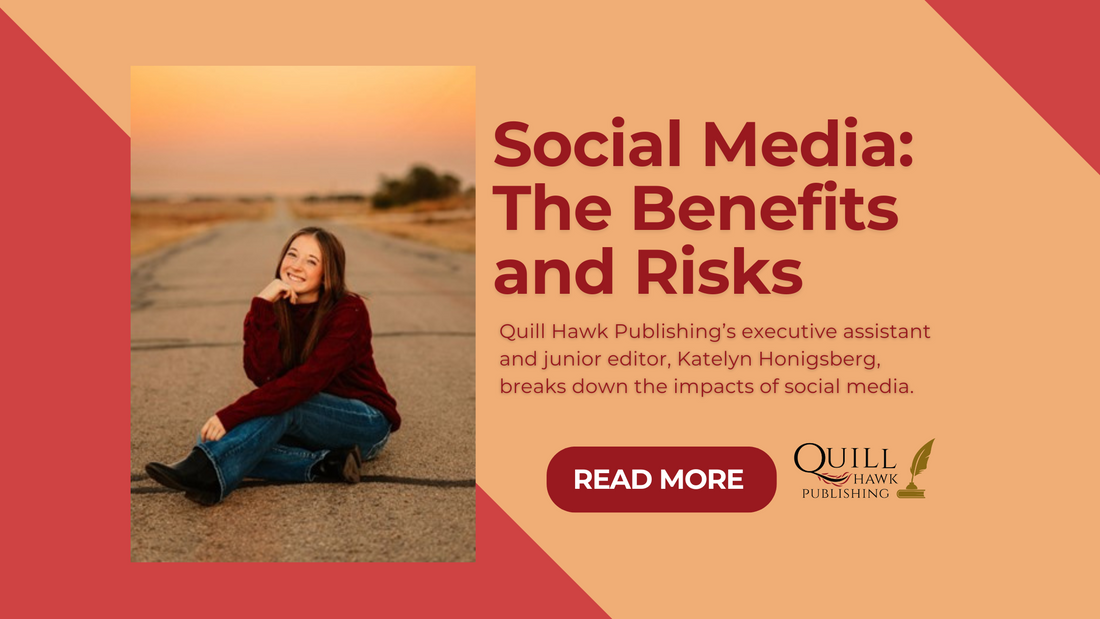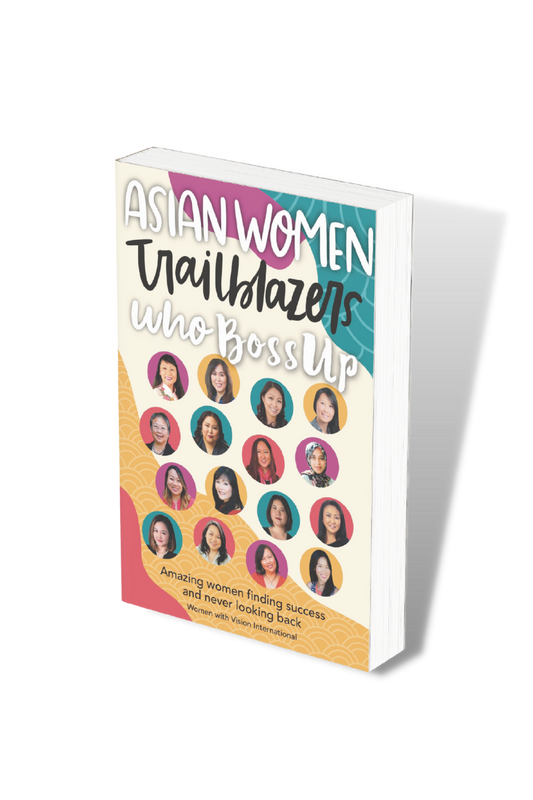Introduction to Social Media
Over the last twenty years, social media has evolved from a simple online experiment into a significant part of daily life worldwide. What started as a way to share photos and reconnect with friends has now evolved into a massive industry with billions of users. Today, over 4.5 billion people use social media, spending approximately two and a half hours each day on sites such as Facebook, Instagram, TikTok, X, Snapchat, and LinkedIn (Chaffey, 2025). Young adults and teenagers often spend even more time on these platforms.
Social media can help people connect across distances and cultures. It gives everyone a chance to share their ideas and creativity with others who have similar interests. But the same features that make social media useful can also make it risky. Problems like false information, online bullying, privacy issues, and mental health concerns are serious and need attention.
This article examines both the benefits and risks of social media, with a particular focus on its impact on bullying, the phenomenon of catfishing, mental health issues, and strategies for limiting its negative effects.

Impact of Social Media
Social media has a profound impact on various aspects of our lives, including politics, education, business, identity, entertainment, and mental health. Its impact is not just good or bad. To truly understand it, we need to examine both the benefits and risks of social media.
Positive Impacts of Social Media
Enhanced Connectivity
A primary advantage of social media is its capacity to connect individuals. Families separated by distance can maintain relationships through video calls, group chats, and sharing photos.
Long-lost friends can reconnect, and professionals can develop career networks. Social media has become a place for families and friendships to flourish and grow in intimacy. During the COVID-19 pandemic, social media played a crucial role in providing reassurance and reducing feelings of loneliness for individuals experiencing social isolation. Not only was entertainment on social media crucial, but the ability to stay connected to family and friends who were otherwise separated was a heartwarming and necessary endeavor. (“#StayHome #WithMe: How Do YouTubers Help with COVID-19 Loneliness?”, 2021)
A young adult, who was a high school freshman during the COVID shutdowns, told me when I asked how social media affected them during COVID, “social media helped me stay connected. I definitely wouldn’t have the friendships I have now if it weren’t around when I was stuck at home. Not being able to hang out with my friend's kind of took away my social time and social media gave me that back through funny videos with each other and sending each other posts and things we found entertaining.”
Access to Information
Social media has empowered information sharing. News spreads almost instantaneously, allowing users to stay updated on global events in real-time. This has proven vital during crises, natural disasters, and political upheavals, where timely updates can save lives. Not only is social media an important source for communities, but also the news industry. People can discover issues within their area by staying active on platforms such as Facebook, where the community generally posts about updates like crime, heartfelt moments, and critical information regarding safety and health. Police officers and firefighters have begun posting more on social media so everyone can stay well-informed on pivotal information. (“Social Media in Disasters”, 2023)
In addition, individuals have more opportunities to learn about niche topics, discover diverse perspectives, and access educational resources shared freely by experts. Thanks to the widespread use of social media, vote counts in political campaigns have gone up drastically since the 2000s. With news being so readily accessible, more people were able to form opinions based on others’ stories and their own experiences. If social media were not around, the activity in politics might not be as potent.
Business and Marketing Opportunities
Social media helps businesses, especially small ones, reach customers and market their products without incurring significant ad expenses. Not only when selling online creates personal experiences but it also gets rid of overhead so entrepreneurs can focus on connecting with people worldwide. Instagram and TikTok enable people to tell stories in creative ways, while LinkedIn facilitates professional networking. Social media has also created new job opportunities, such as influencer marketing and online selling. Many people now make a living by creating and sharing videos online.
Social Movements and Advocacy
Social media platforms have become stages for activism. Movements like #MeToo, #BlackLivesMatter, and climate change campaigns have gained traction due to their ability to mobilize people online (“Can Celebrity Activism Campaigns on social media Actually Make a Difference? Here’s What an Expert Thinks”, 2020). Social media offers marginalized communities a platform to amplify their voices, challenge injustice, and drive social change.
Entertainment and Creativity
Social media is a platform for entertainment, featuring a wide range of content, from dance challenges to art exhibits. It gives a window into other cultures and personal views into the lives of others. People often spend time scrolling through photos and videos, especially young adults. It’s easy to find content that matches your interests, which helps people express themselves and learn about other cultures.

Negative Impacts of Social Media
While the positive aspects are significant, it is equally important to consider the darker side of social media.
Mental Health Concerns
Studies show that spending a lot of time on social media can lead to anxiety, depression, loneliness, and lower self-esteem. People often compare themselves to others’ edited photos, which can make them feel worse about themselves. These platforms are designed to keep people online, which can make these problems even bigger.
As people share all kinds of posts, another issue is the comparison that often accompanies them. Women and men both feel more self-conscious the more they see others around their age who appear more attractive. Even if their pictures are edited and framed for posting, it still affects a person’s mental state. According to The Cybersmile Foundation, which conducted a poll for the UK’s “Gen Z,” 58.8% reported comparing themselves to someone on social media at least once a day, and 28.6% reported doing so multiple times a day (“Comparison Culture Report,” 2023). The challenge of addressing personal comparisons in social media is entirely special to everyone. Sometimes we don’t even realize we do it.
Spread of Misinformation
The same speed and accessibility that enable social media to spread information also facilitates the rapid dissemination of falsehoods. Disinformation campaigns, conspiracy theories, and “fake news” can influence elections, public health behaviors, the lives of innocent people, and societal trust. The COVID-19 pandemic highlighted the dangers of misinformation as false cures, vaccine myths, and conspiracy theories spread widely online (“Coronavirus: the spread of misinformation,” 2020). The term “Canceling” or “Canceled” is relatively new and describes when social media decides that someone is wrong and shouldn’t be supported. This process, seen as a justice endeavor, has led to many people facing backlash from strangers that hurts their perceived online reputation.
Erosion of Privacy
Personal data shared on social media can be exploited by corporations, advertisers, or malicious people. Privacy breaches, data leaks, and surveillance concerns have become increasingly common, raising ethical and legal debates about the ownership and security of personal information (“Social Media Privacy – EPIC – Electronic Privacy Information Center,” n.d.).
Decreased Attention Span
Seeing numerous short, exciting posts can lead people to seek quick rewards, making it harder to focus on longer tasks (Chiossi, 2023). The brain receives small bursts of pleasure and wants to continue experiencing them. This can impact schoolwork, job performance, and even our interactions with others. Bias is a very real threat from social media. An algorithm sets up your page to keep you on it. As you watch things and interact with videos and posts, it tracks your attention and frames what it gives you around it. This can create a biased and limited worldview. As you are only shown things that social media knows you will be interested in and will continue to interact and stay online.
Cybercrime and Exploitation
Social media is often used for scams, identity theft, and other harmful actions. Children and older adults are especially at risk. Scams have become very common, and many people are upset about kids being exposed to dangerous or inappropriate behavior online.
In July 2022, Gavin Guffey, son of South Carolina State Rep. Brandon Guffey, committed suicide after being sexploited on social media. Sexploited is a relatively new phenomenon where criminals will pose as someone to get the victim to send inappropriate pictures and then use those pictures as ransom to gain some sort of financial compensation. Gavin committed suicide 30 minutes after getting a message on social media. He was fifteen. After exchanging nude pictures with someone posing as a young girl his age, they asked him for money, or they’d forward his pictures to his parents and ruin his life. The sense of urgency and state of desperation caused Gavin to take his life.
While dealing with the grief of losing their child, Gavin’s parents were messaged by the criminals, who tauntingly asked, “Did I tell you your son begged for his life?” Since then, Brandon Guffey passed legislation to make sexploitation a felony and continues to advocate for justice for his son and awareness for other parents to be aware of who messages their children. (Hale, 2025)

Social Media and Bullying
Bullying has always happened in schools and workplaces, but social media has made it easier for people to bully others online, known as cyberbullying. Unlike face-to-face bullying, cyberbullying can reach many people quickly. Kids often use videos or stories to insult others, feeling braver behind a screen. Sadly, cyberbullying has led to suicides among children, teens, and even young adults. (van Geel, 2014) Because social media is everywhere, it’s hard for young people to escape bullying, even at home.
Characteristics of Cyberbullying
Anonymity: Perpetrators can hide behind fake accounts or pseudonyms, emboldening them to say things they would not say in person.
Persistence: Online content can linger indefinitely, resurfacing long after the initial act of bullying.
Public Exposure: Victims may be humiliated in front of a broad audience, magnifying psychological damage.
Examples:
Cases of “shaming” on social media highlight how quickly bullying can spiral out of control. What might begin as a cruel comment or unflattering photo can escalate into large-scale harassment campaigns involving hundreds or thousands of strangers.
People are trying to fight online bullying with reporting tools, laws, and education. Still, the problem persists, and it requires further attention. Some people have started to accept cyberbullying as normal, but it remains a serious issue for many.

Social Networking Catfishing
Another risk associated with social media is catfishing, the practice of creating a false identity to deceive others. Catfishers may impersonate someone else by stealing photos and personal information, or they may construct an entirely fictional persona. (Yang, 2024)
Motivations for Catfishing
Romantic Manipulation: Some individuals use fake identities to engage in online relationships. Victims may invest significant emotional energy, time, and sometimes money into these relationships, only to discover they have been deceived. This has been the case with teenagers who believe they’re meeting with someone barely older than themselves, only to be met with old, usually middle-aged men.
Financial Fraud: Catfishing often involves scams where people are tricked into sending money for fake reasons. For example, some scams pretend to be from a ‘Nigerian Prince’ who needs money to claim a fortune. While it may sound like a joke, many people have actually lost money to these tricks. (“Nigerian prince scams still rake in over $700,000 a year,” 2019)
Entertainment or Malice: In some cases, catfishing is motivated by boredom or a desire to manipulate and humiliate others.
Risks and Consequences
The emotional fallout for victims can be devastating. Beyond heartbreak, victims may lose money, face public humiliation, or suffer a profound sense of betrayal. For some, the experience damages their ability to trust others, both online and offline.
Prevention and Awareness
Awareness campaigns and shows like Catfish have helped raise awareness of this issue. Still, catfishing happens when people are looking for connection and trust too easily.
Teaching digital skills, being careful with unknown profiles, and checking information can help prevent it. It’s also important not to open suspicious links or reply to messages from strangers.

Mitigating the Negative Effects of Social Media
Social media can have serious downsides, but these problems are not unavoidable. Everyone—individuals, families, teachers, governments, and tech companies—can contribute to making social media a safer and healthier place.
Promoting Digital Literacy
Teaching people, especially young users, how to critically evaluate online content is essential. This includes recognizing misinformation, understanding the risks of oversharing, and developing resilience against peer pressure and cyberbullying.
Setting Healthy Boundaries
Users can take practical steps, such as setting screen-time limits, curating feeds to minimize harmful content, and designating tech-free times (like during meals or before bed). Parental controls and monitoring can help protect children and teenagers.
Encouraging Mindful Use
Instead of just scrolling, people can use social media intentionally, such as for learning, networking, or connecting with others. Apps that track your online time can help you identify bad habits and make changes.
Strengthening Legal and Regulatory Frameworks
Governments and international organizations are beginning to address social media harms through legislation. For example, stronger data protection laws, anti-bullying policies, and requirements for transparency in content moderation can hold companies accountable.
Platform Responsibility
Social media companies should focus on developing more effective ways to moderate content, protect user privacy, and prioritize users’ well-being. New features, such as warnings before sharing harmful posts or tools that identify harassment, are positive steps forward.
Fostering Offline Balance
Spending time with friends and family, enjoying hobbies, and engaging in offline activities can help mitigate the downsides of excessive social media use. Getting outside, playing sports, and engaging in face-to-face interactions can bring balance and reduce people’s dependence on online approval.

Conclusion
Social media isn’t all good or all bad. It’s a tool, and its impact depends on how we use it. It brings people together, shares information, and gives a voice to those who need it. But there are real risks too, like cyberbullying, catfishing, mental health problems, privacy issues, and false information.
The future of social media depends on what we all do—users, teachers, leaders, and companies. By learning digital skills, creating smart rules, and using social media wisely, we can maximize its benefits while minimizing its drawbacks.
Ultimately, the goal isn’t to quit social media, but to use it wisely. With responsible use, it can become a place for connection, growth, and positive change, rather than division and harm.

About Katelyn Honigsberg, Junior Editor and Executive Assistant
Katelyn Honigsberg is young, passionate, and chasing her dreams to the best of her ability. Self-published as a Sophomore in high school, Katelyn is dedicated to a career in the literary world with hopes of one day being a bestselling author. Attending the University of Central Oklahoma for a bachelor’s in English and a minor in Technical Writing is only the tipping point of all she’s going to do. When she isn’t reading or writing, she enjoys playing card games or binge-watching her favorite shows, such as ‘The Office’ or ‘Brooklyn 99.’ Katelyn is passionate about her faith and wants to recognize God and all His good works for everything He has done for her.






